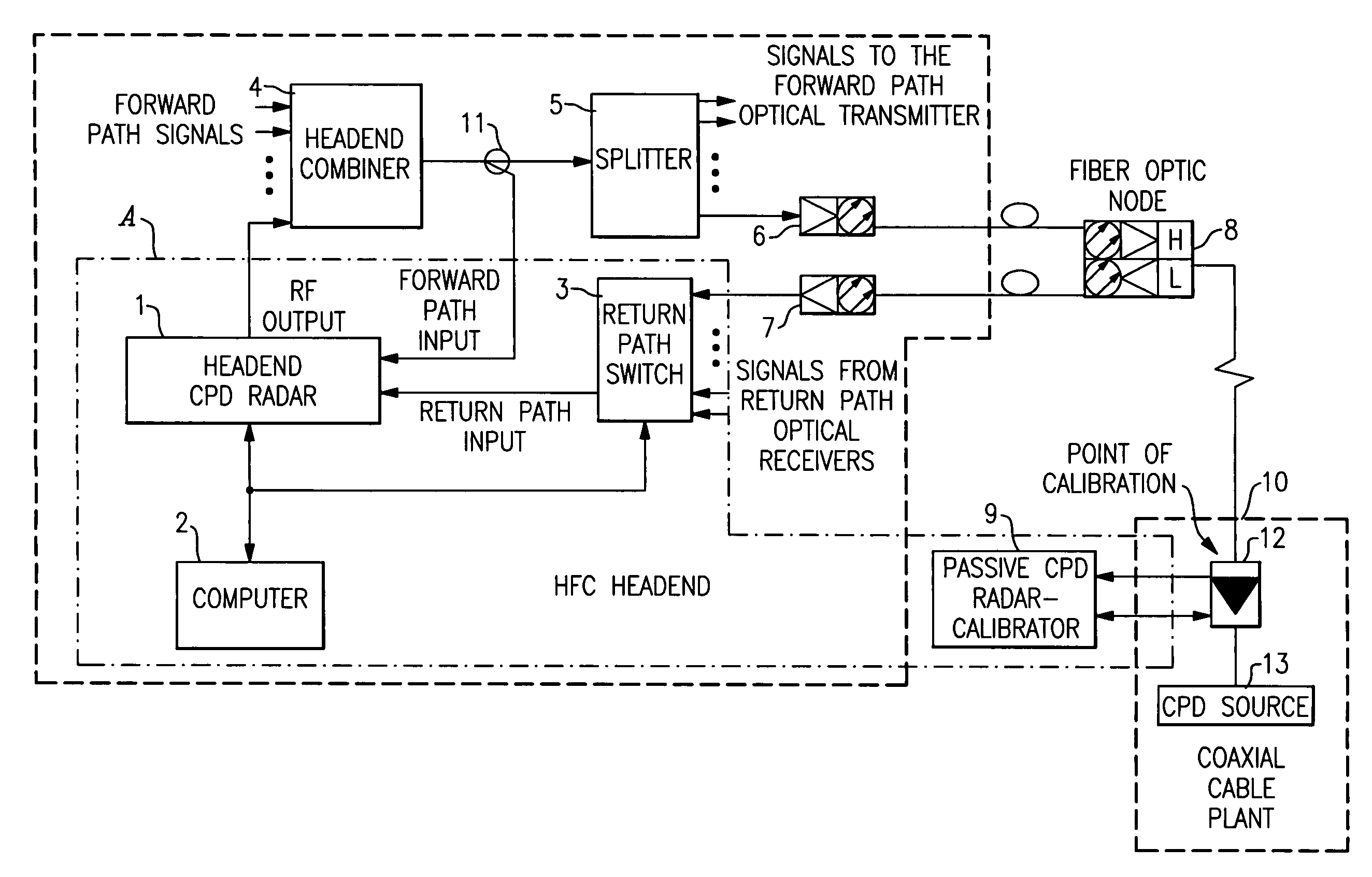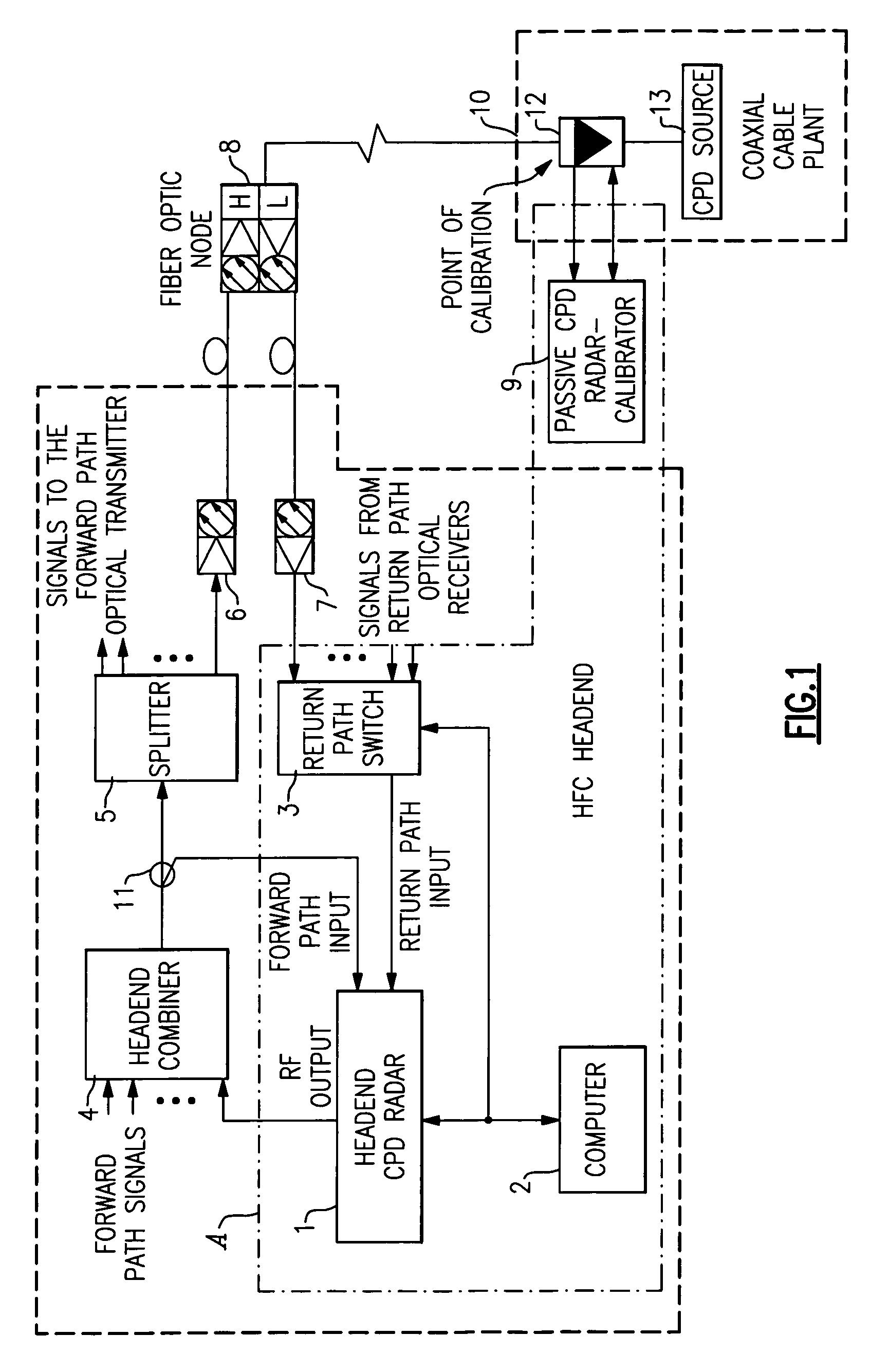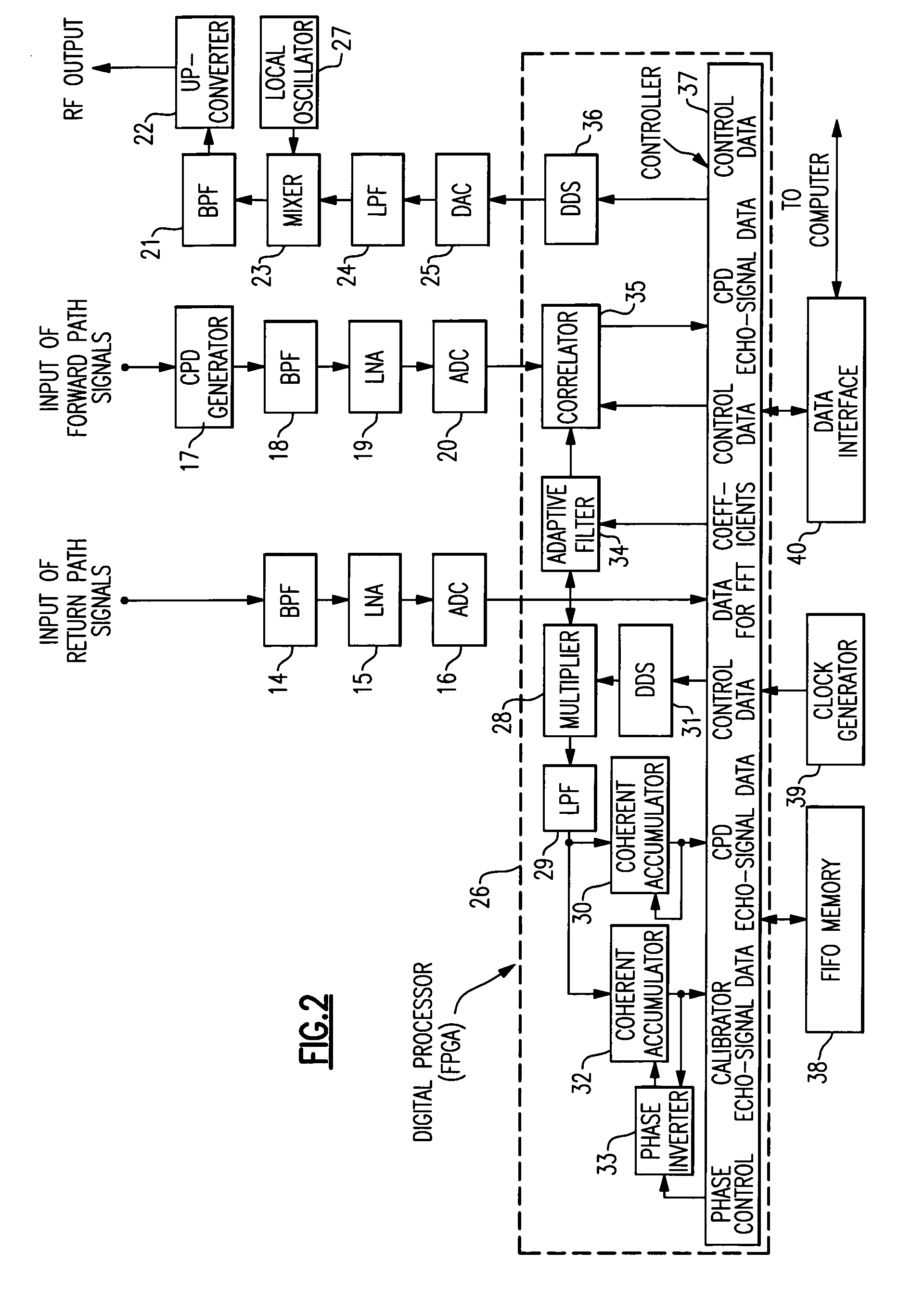Method and apparatus for pinpointing common path distortion
a common path and distortion technology, applied in the field of common path distortion detection, can solve the problems of losing two useful channels in the forward path, affecting the accuracy of the detection signal, and separating the detection signal from the sideband by 59.5 mhz, so as to reduce the complexity and processing time of the correlator, improve the accuracy and accuracy, and improve the accuracy.
- Summary
- Abstract
- Description
- Claims
- Application Information
AI Technical Summary
Benefits of technology
Problems solved by technology
Method used
Image
Examples
Embodiment Construction
[0054]FIG. 1 shows a simplified block diagram of a preferred embodiment of a CPD pinpointing system A of the present invention. System A is incorporated into an HFC headend and a coaxial cable portion of an HFC cable TV network. System A includes the following equipment connected at the headend: a headend CPD radar unit 1, a return path switch 3, and a computer 2. System A further includes equipment connected directly to the coaxial cable portion of the network—a portable passive CPD radar-calibrator unit 9. The general headend equipment includes a headend combiner 4 for combining forward path signals (i.e., analog and digital TV program signals), a signal splitter 5 for delivering the forward path signals to a plurality of optical nodes, a plurality of optical transmitters 6 for transmitting the forward path signals to fiber optic nodes in the fiber optic portion of the HFC network, and a plurality of optical receivers 7 for receiving return path signals from the optical nodes and ...
PUM
 Login to View More
Login to View More Abstract
Description
Claims
Application Information
 Login to View More
Login to View More - R&D
- Intellectual Property
- Life Sciences
- Materials
- Tech Scout
- Unparalleled Data Quality
- Higher Quality Content
- 60% Fewer Hallucinations
Browse by: Latest US Patents, China's latest patents, Technical Efficacy Thesaurus, Application Domain, Technology Topic, Popular Technical Reports.
© 2025 PatSnap. All rights reserved.Legal|Privacy policy|Modern Slavery Act Transparency Statement|Sitemap|About US| Contact US: help@patsnap.com



